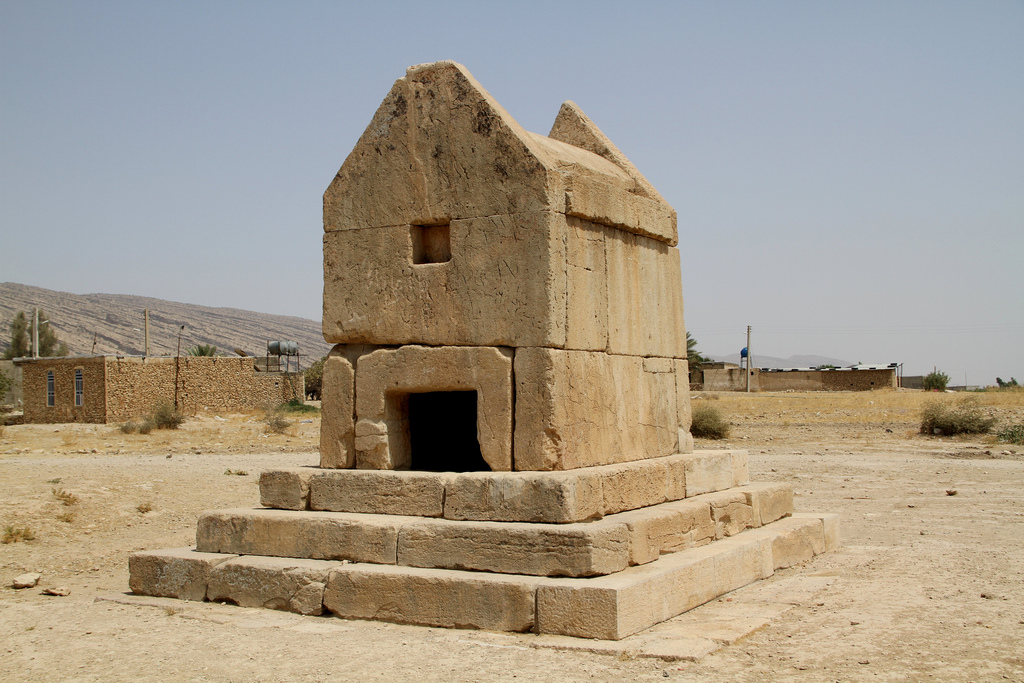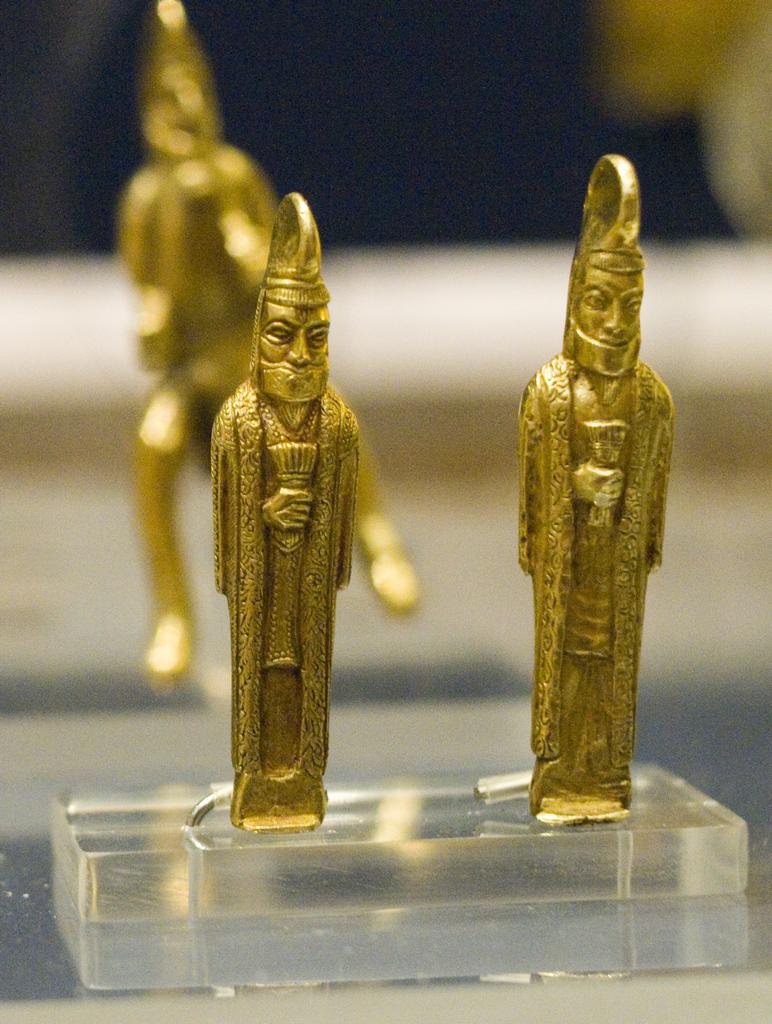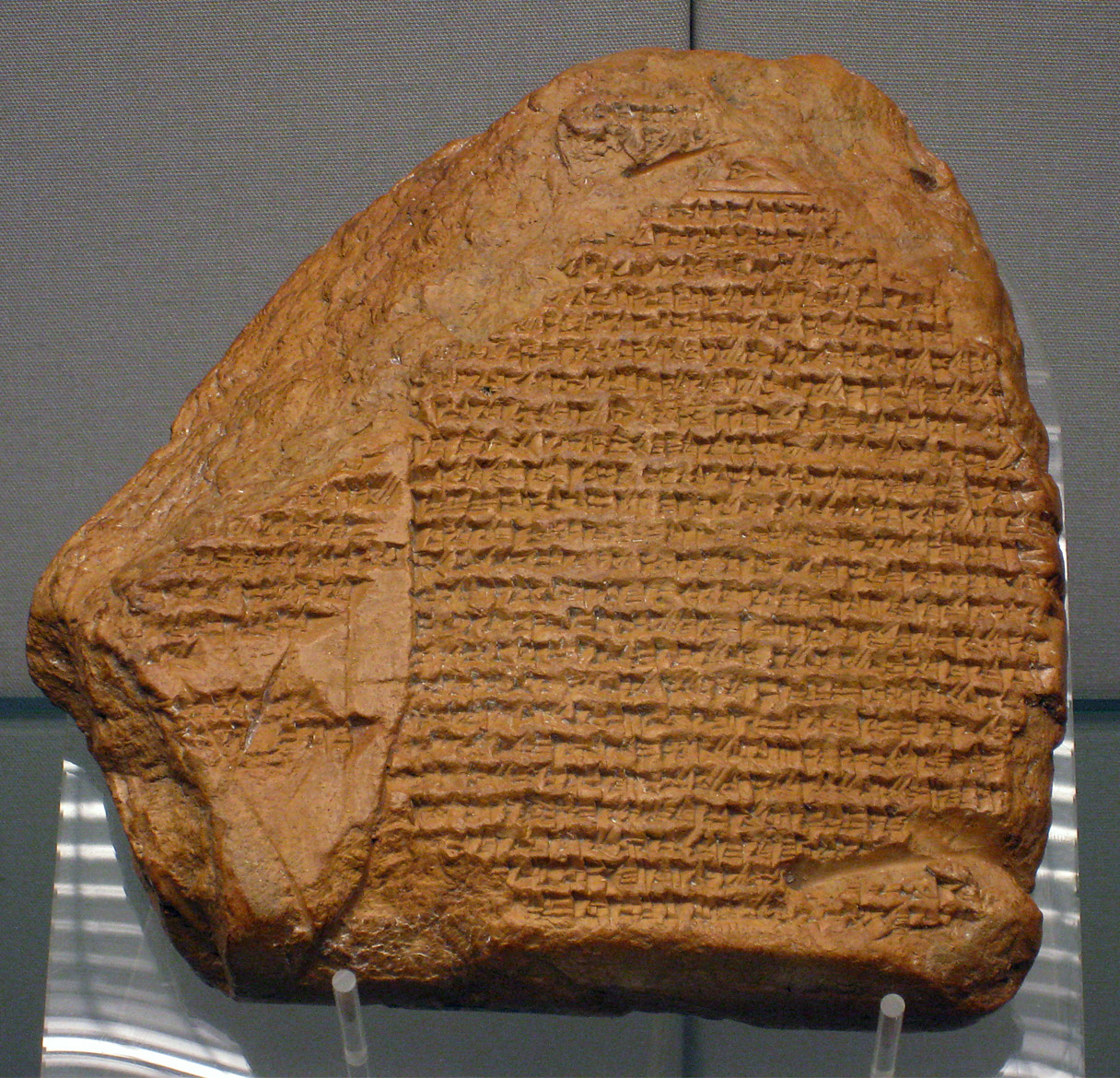|
Mandane Of Media
Mandane (Greek: Μανδάνη, ''Mandánē'') was a Median princess and, later, the queen consort of the Persian king Cambyses I and the mother of Cyrus the Great, the founder of the Achaemenid Empire. The name likely originates from the Old Iranian ''*Mandanā-'', which means “''delighting'', ''cheerful''”. Mandane was the daughter of Astyages, but the name of her mother is not mentioned. It is said that Astyages married Aryenis in 585 BC, but it is unlikely that Aryenis was the mother of Mandane. She possibly was the daughter of a previous wife of Astyages. According to the Greek historian Herodotus, Astyages had a dream in which his daughter stood before him, and suddenly a vine began to grow from her back, extending its tendrils to cover all of Asia. He called upon the Magi and priests to interpret the dream, and they explained that the vine represented his grandson, the son of Mandane, who would take his place on the throne and rule over all of Asia. In 577 BC, when ... [...More Info...] [...Related Items...] OR: [Wikipedia] [Google] [Baidu] |
Cambyses I
Cambyses I ( ''Kambūjiya'') was king of Anshan from c. 580 to 559 BC and the father of Cyrus the Great (Cyrus II), younger son of Cyrus I, and brother of Arukku. He should not be confused with his better-known grandson Cambyses II. Etymology The origins of the name of "Cambyses" () is disputed in scholarship; according to some scholars, the name is of Elamite origin, whilst others associate it with Kambojas, an Iranian people who inhabited northwestern India. The name of Cambyses is known in other languages as: Elamite ''Kanbuziya''; Akkadian ''Kambuziya''; Aramaic ''Kanbūzī''. Background No records composed during Cambyses' lifetime have survived. Cambyses was an early member of the Achaemenid dynasty. He was apparently a great-grandson of its founder Achaemenes, grandson of Teispes and son of Cyrus I. His paternal uncle was Ariaramnes and his first cousin was Arsames. However, around 100 years later, Herodotus claimed that Cambyses I w ... [...More Info...] [...Related Items...] OR: [Wikipedia] [Google] [Baidu] |
Magi
Magi (), or magus (), is the term for priests in Zoroastrianism and earlier Iranian religions. The earliest known use of the word ''magi'' is in the trilingual inscription written by Darius the Great, known as the Behistun Inscription. Old Persian texts, predating the Hellenistic period, refer to a magus as a Zurvanism, Zurvanic, and presumably Zoroastrian, priest. Pervasive throughout the Eastern Mediterranean and West Asia until late antiquity and beyond, ''mágos'' (μάγος) was influenced by (and eventually displaced) Greek ''The Lesser Key of Solomon#Ars Goetia, goēs'' (γόης), the older word for a practitioner of magic (paranormal), magic, with a meaning expanded to include astronomy, astrology, alchemy, and other forms of esoteric knowledge. This association was in turn the product of the Hellenistic fascination for Pseudo-Zoroaster, who was perceived by the Greeks to be the Chaldean founder of the Magi and inventor of both astrology and magic, a meaning that stil ... [...More Info...] [...Related Items...] OR: [Wikipedia] [Google] [Baidu] |
Median Dynasty
The Median dynasty was, according to the ancient Greek historian Herodotus, a dynasty composed of four kings who ruled for 150 years under the Median Empire. If Herodotus' story is accurate, the Medes were unified by a man named Deioces, the first of the four kings who would rule the Median Empire; a mighty empire that included large parts of Iran and eastern Anatolia. Chronology Using the chronology proposed by Herodotus, a putative timeline of the reign of Median kings can be constructed. (Note that Scythian rule has no specified dates in this chronology.) Herodotus' numbers are suspect: the first two kings together ruled 75 years, as did the last two, making the total reign of the dynasty 150 years. The existence of Cyaxares and Astyages is not controversial, as they are mentioned in other contemporaneous sources. However, Deioces and Phraortes, the first two kings, are not mentioned in contemporary sources. Scholars have tried to identify them with other named individuals ... [...More Info...] [...Related Items...] OR: [Wikipedia] [Google] [Baidu] |
Achaemenid Dynasty
The Achaemenid dynasty ( ; ; ; ) was a royal house that ruled the Achaemenid Empire, which eventually stretched from Egypt and Thrace in the west to Central Asia and the Indus Valley in the east. Origins The history of the Achaemenid dynasty is mainly known through Greek historians, such as Herodotus, Thucydides, and Xenophon. Additional sources include the Hebrew Bible, other Jewish religious texts, and native Iranian sources. According to Herodotus, the Achaemenids were a clan of the Pasargadae tribe:These were the leading tribes, on which all the other Persians were dependent, namely the Pasargadae, Maraphians, and Maspioi. Of these, the Pasargadae are the most noble and include the family of Achaemenids, the Kings of Persia, who are descendants of Perseus.Darius the Great, in an effort to establish his legitimacy, later traced his genealogy to Achaemenes, Persian "". His son was given as Teispes, and from him came in turn Ariaramnes, Arsames, and Hystaspes. How ... [...More Info...] [...Related Items...] OR: [Wikipedia] [Google] [Baidu] |
Median Kingdom
Media (Old Persian: ''Māda''; Ancient Greek, Greek: ''Mēdía''; Akkadian language, Akkadian: ''wikt:𐎶𐎠𐎭#Descendants, Mādāya'') was a political entity centered in Ecbatana that existed from the 7th century BCE until the mid-6th century BCE and is believed to have dominated a significant portion of the Iranian plateau, preceding the powerful Achaemenid Empire. The frequent interference of the Assyrians in the Zagros Mountains, Zagros region led to the process of unifying the Median tribes. By 612 BCE, the Medes became strong enough to overthrow the declining Assyrian empire in alliance with the Babylonians. However, contemporary scholarship tends to be skeptical about the existence of a united Median kingdom or state, at least for most of the 7th century BCE. According to classical historiography, Media emerged as one major power of the ancient Near East after the collapse of Assyria. Under Cyaxares (r. 625–585 BCE), the kingdom's borders were expanded to the east ... [...More Info...] [...Related Items...] OR: [Wikipedia] [Google] [Baidu] |
Persian Revolt
The Medo-Persian conflict was a military campaign led by the Median king Astyages against Persis in the mid 6th-century BCE. Classical sources claim that Persis had been a vassal of the Median kingdom that revolted against Median rule, but this is not confirmed by contemporary evidence. After some battles the Persians led by Cyrus the Great emerged victorious, subsequently conquering Median territories and establishing the Achaemenid Empire. The main sources on the conflict are the '' Histories'' of the Greek historian Herodotus and two cuneiform inscriptions of the Babylonian king Nabonidus. The Babylonian texts suggest that the decisive battle and the capture of Ecbatana, the capital of Media, were only the climax of the Medo-Persian hostilities that lasted for at least three years (553-550 BCE). Dating The date of this conflict is somewhat problematic. As seen in the Cylinder of Sippar, the conflict began in the third year of Nabonidus' reign, which is in 553 BCE, and th ... [...More Info...] [...Related Items...] OR: [Wikipedia] [Google] [Baidu] |
Ecbatana
Ecbatana () was an ancient city, the capital of the Median kingdom, and the first capital in History of Iran, Iranian history. It later became the summer capital of the Achaemenid Empire, Achaemenid and Parthian Empire, Parthian empires.Nardo, Don. "Ecbatana." ''The Greenhaven Encyclopedia of Ancient Mesopotamia'', edited by Robert B. Kebric, Greenhaven Press, 2007, pp. 97-98. ''Gale In Context: World History'', link.gale.com/apps/doc/CX3205100129/WHIC?u=wylrc_uwyoming&sid=summon&xid=e9682d3c. Accessed 20 Nov. 2022. It was also an important city during the Seleucid Empire, Seleucid and Sasanian Empire, Sasanian empires. It is believed that Ecbatana is located in the Zagros Mountains, the east of central Mesopotamia, on Hagmatana Hill (Tappe-ye Hagmatāna). Ecbatana's strategic location and resources probably made it a popular site even before the 1st millennium BC. Along with Athens in Greece, Rome in Italy and Susa in Iran, Ecbatana is one of the few ancient cities in the world th ... [...More Info...] [...Related Items...] OR: [Wikipedia] [Google] [Baidu] |
Cyropaedia
The ''Cyropaedia'', sometimes spelled ''Cyropedia'', is a partly fictional biography of Cyrus the Great, the founder of Persia's Achaemenid Empire. It was written around 370 BC by Xenophon, the Athens, Athenian-born soldier, historian, and student of Socrates. The Latinized title ''Cyropaedia'' derives from the Ancient Greek language, Greek ''Kúrou paideía'' (), meaning The Education of Cyrus. Aspects of it would become a model for medieval writers of the genre mirrors for princes. In turn, the ''Cyropaedia'' strongly influenced the most well-known but atypical of these, Machiavelli's ''The Prince'', which fostered the rejection of medieval political thinking and development of modern politics. Format In substance, the ''Cyropaedia'' is a narrative describing the education of the ideal ruler. It has been interpreted as an early novel, a biography, and a manifesto on leadership. The work is intended to communicate political and moral instruction to its audience, most of whom wo ... [...More Info...] [...Related Items...] OR: [Wikipedia] [Google] [Baidu] |
Xenophon
Xenophon of Athens (; ; 355/354 BC) was a Greek military leader, philosopher, and historian. At the age of 30, he was elected as one of the leaders of the retreating Ancient Greek mercenaries, Greek mercenaries, the Ten Thousand, who had been part of Cyrus the Younger's attempt to seize control of the Achaemenid Empire. As the military historian Theodore Ayrault Dodge wrote, "the centuries since have devised nothing to surpass the genius of this warrior". For at least two millennia, it has been debated whether or not Xenophon was first and foremost a general, historian, or philosopher. For the majority of time in the past two millennia, Xenophon was recognized as a philosopher. Quintilian in Institutio Oratoria, ''The Orator's Education'' discusses the most prominent historians, orators and philosophers as examples of eloquence and recognizes Xenophon's historical work, but ultimately places Xenophon next to Plato as a philosopher. Today, Xenophon is recognized as one of the gr ... [...More Info...] [...Related Items...] OR: [Wikipedia] [Google] [Baidu] |
Harpagus
Harpagus, also known as Harpagos (Ancient Greek Ἅρπαγος; Akkadian: ''Arbaku''), was a Median general during the 6th century BC, credited by Herodotus as having put Cyrus the Great on the throne through his defection during the Battle of Pasargadae. Biography According to Herodotus' '' Histories'', Harpagus was a member of the Median royal house who served King Astyages, the last king of Media. When word reached Astyages that Cyrus was gathering his forces, he ordered Harpagus, as his primary general, to lead the army against Cyrus. After a three-day battle on the plain of Pasargadae, Harpagus took his revenge for the death of his son at the hands of Astyages when he changed his allegiance on the battlefield in favour of Cyrus, resulting in Astyages' defeat and the formation of the Persian Empire. Myth Herodotus accounts for the change in Harpagus' support to a version of the cannibal feast of Thyestes. He reports that Astyages, after having a dream that his daughte ... [...More Info...] [...Related Items...] OR: [Wikipedia] [Google] [Baidu] |
Persians
Persians ( ), or the Persian people (), are an Iranian ethnic group from West Asia that came from an earlier group called the Proto-Iranians, which likely split from the Indo-Iranians in 1800 BCE from either Afghanistan or Central Asia. They are indigenous to the Iranian plateau and comprise the majority of the population of Iran.Iran Census Results 2016 United Nations Alongside having a common cultural system, they are native speakers of the and of the |







